In case you have been living under a rock lately, it’s been two months now since Lime e-scooters turned up on Christchurch (and Auckland) streets. Judging by the volume of alarmist news articles and letters to the editor, you’d think that Donald Trump had suddenly been made NZ prime minister.
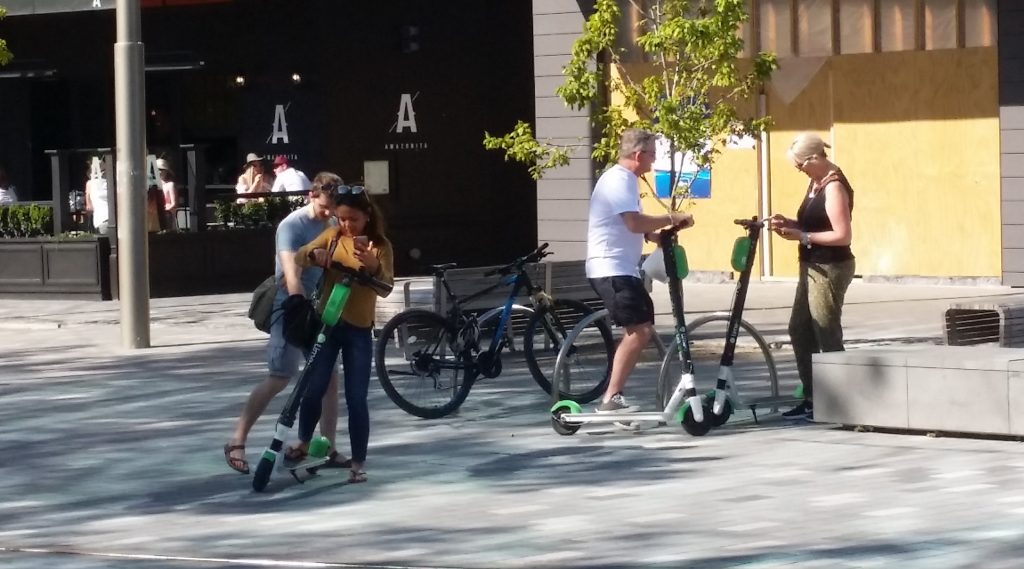
I don’t want to get into too much discussion here about the pros or cons of e-scooters in general (which have been legal in NZ since 2004 by the way); there has already been a lot written about that and clearly it polarises a lot of people (if you haven’t done so already, you might want to complete this CCC survey on e-scooters before next Wednesday). What I do want to look at is their interaction with cycleways and people cycling.
An e-scooter is legally classed as a “wheeled recreational device”, which basically covers anything with wheels smaller than 355mm and potentially with an electric motor up to 300W; skateboards, kick-scooters, roller blades and small children’s bikes/trikes also fall into this category. WRDs are interesting in that they can be used both on paths and roads, with a few rules around their behaviour in each case.
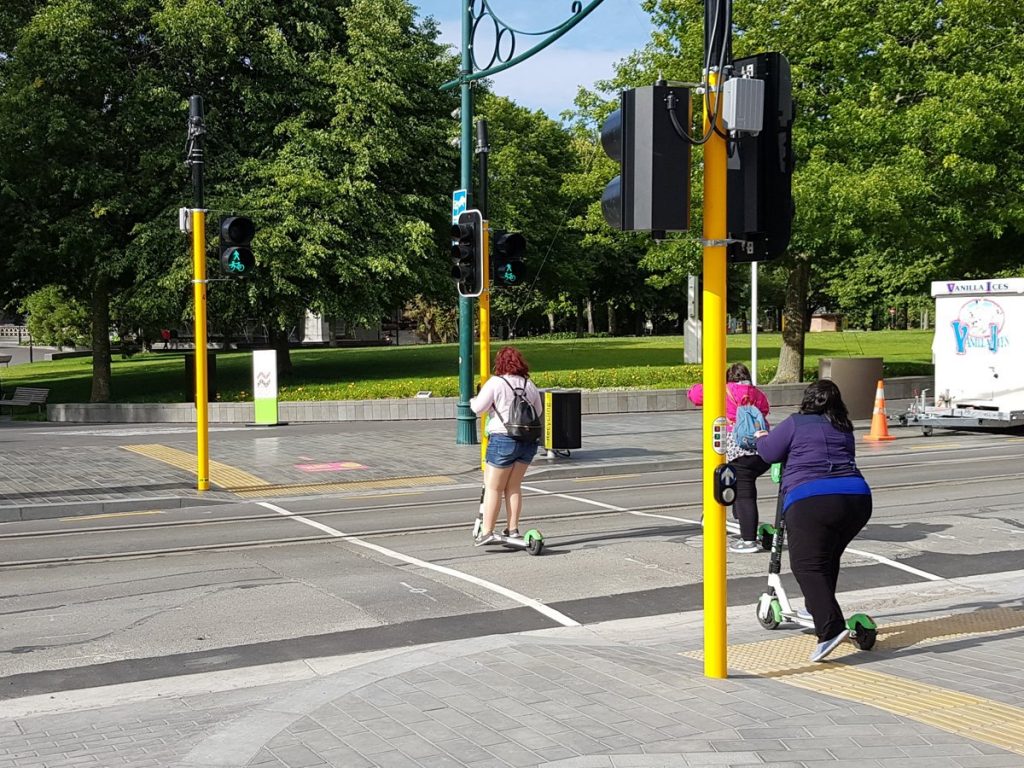
A lot of concern has been raised about the spectre of e-scooters on footpaths potentially travelling at up to 27km/h there and terrorising pedestrians (this seems to overlook the fact that we already have path use legislation prohibiting using paths at speeds hazardous to others – a bit more education and gentle enforcement needed?). Equally, people (including some riders) are concerned about these tiny vehicles mixing with motor vehicles on the general roadway.
So not surprisingly, many people see on-road cycle lanes and separated cycleways as the ideal location for people on e-scooters. There’s even a growing push internationally to redesignate bike lanes for a wider range of “mid-size” vehicles and devices. And it would seem that many scooter riders in Christchurch have already decided to vote with their wheels.
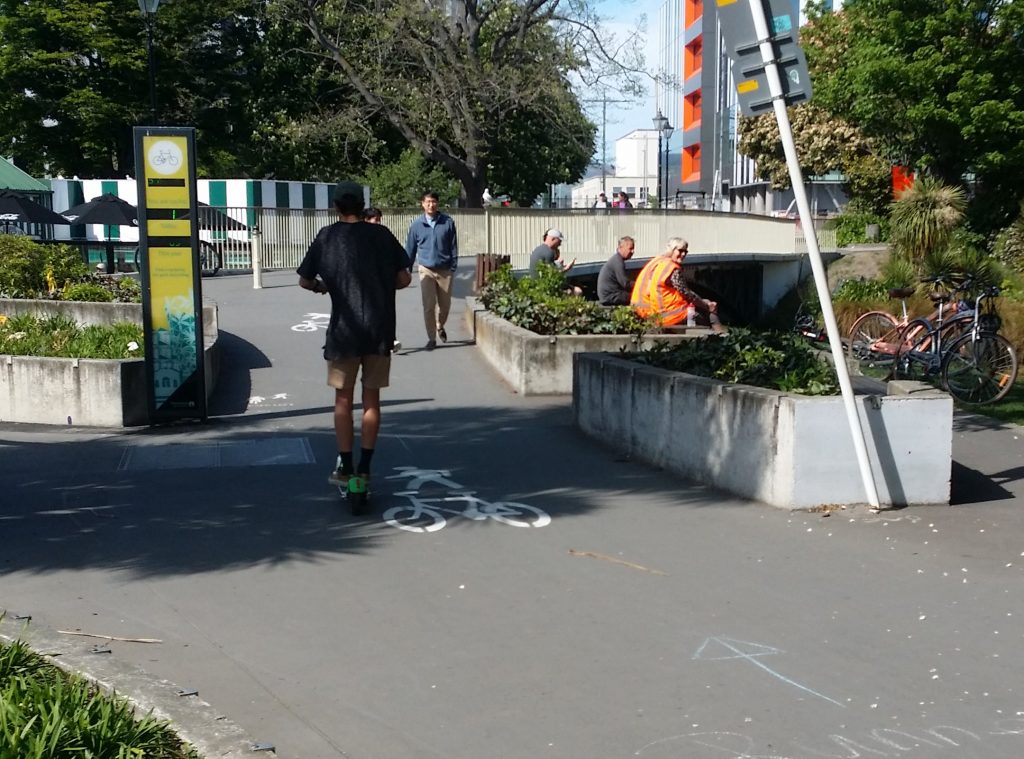
There’s just a couple of technical problems with that:
- The rules for (on-road) cycle lanes, which are a “special vehicle lane”, mean that no other vehicles (including e-scooters) are allowed to use them under normal circumstances (you are allowed to cross over them and use them to avoid obstructions).
- Off-road cycleways don’t generally have this problem (e.g. a cycle path is defined as something “that is intended for the use of cyclists, but which may be used also by pedestrians”). However, in Christchurch, most of the separated cycle tracks (not shared paths) have been resolved by bylaw to be for “cycles only”.
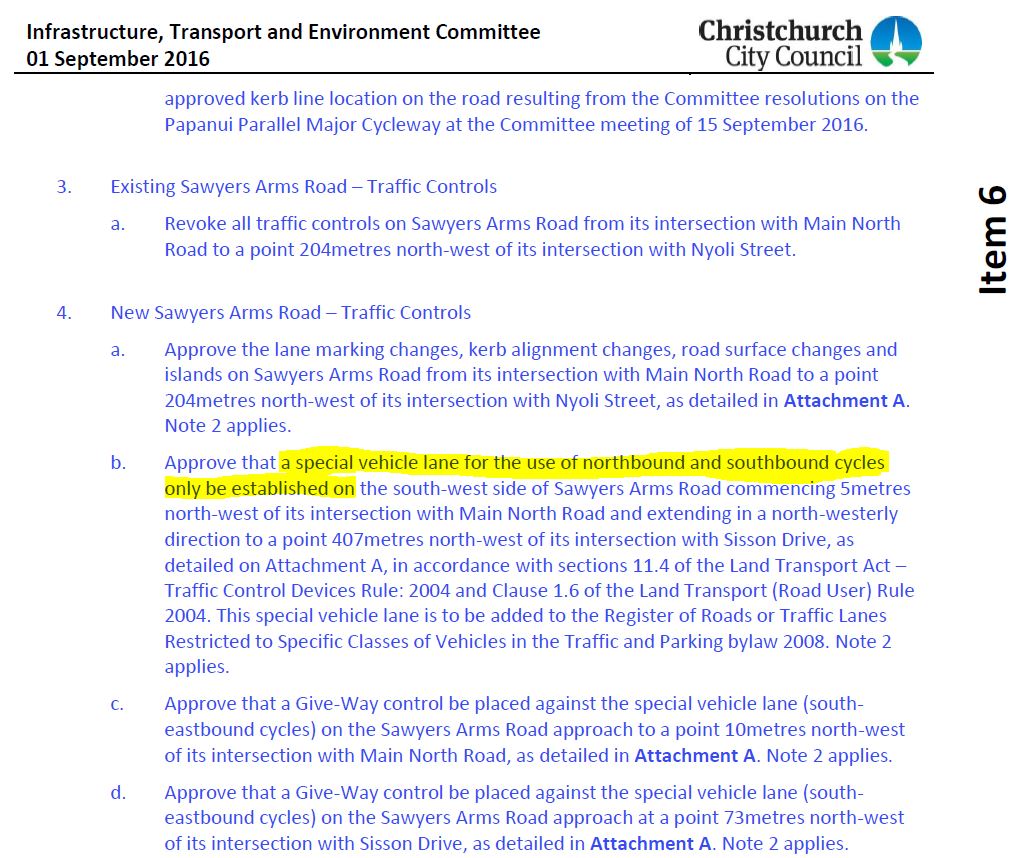
Bear in mind that generally these rules were drafted long before mass e-scooter usage was even thought of as a possibility. But it does mean a current dilemma that probably needs resolving. And the Ministry of Transport and NZTA have been pondering their options for tweaking the rules.
So would simply allowing e-scooters to legally use all cycleways be the best solution? No doubt many pedestrians would be pleased to have fewer people whizzing past them on footpaths. And motorists and e-scooter riders alike may both prefer not to have to share the same roadways (we just had an e-scooter vs truck crash in Auckland). But is that simply transferring the risk to people cycling? Already in the past week we have seen a serious collision between a cyclist and an e-scooter on a cycleway in Auckland (note that neither of the crashes above actually involved a Lime scooter).
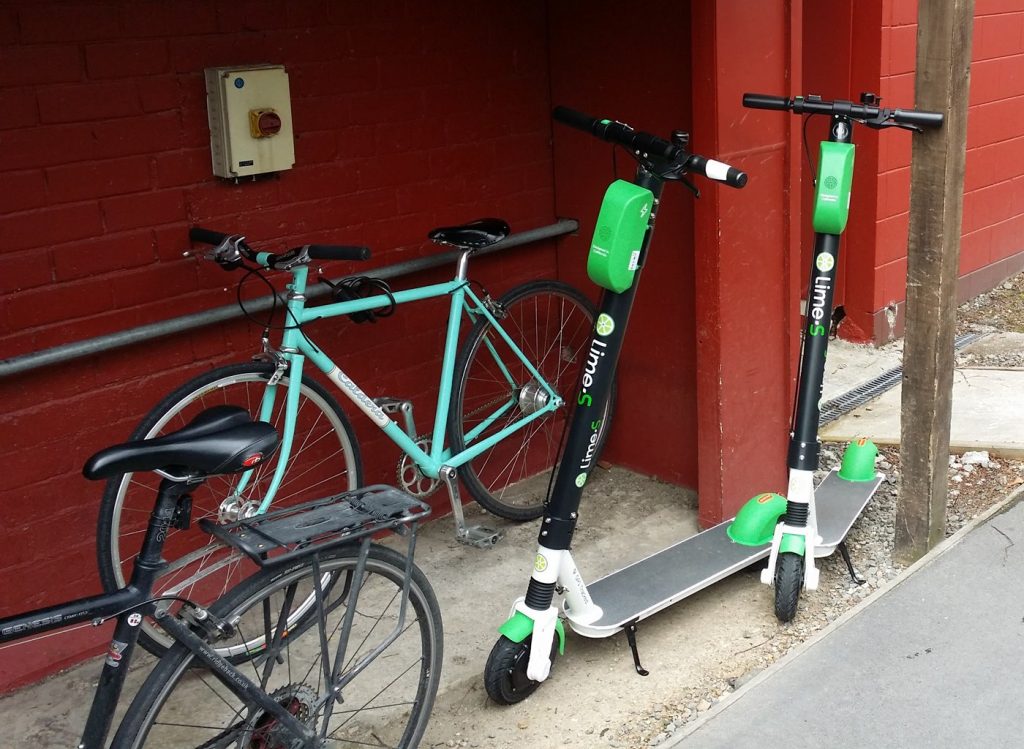
Of course, the point is currently moot on the 90% of Christchurch streets that don’t have a cycleway or cycle lane anyway, so motorists and pedestrians couldn’t entirely bid adieu to e-scooters. On the bright side, having to consider the needs of both cycle and e-scooter users could improve the case for building more cycleways (or “micro-vehicle lanes”)…
It’s also important to put into context the actual risk we’re seeing with the appearance of a lot of e-scooters. The occasional crash may make the newspaper headlines but, rather like cycling, all the mostly safe and successful journeys do not. Idiots will be idiots, no matter what they’re travelling on, but I think I’d sooner face a lot more e-scooters around town than an equivalent number of extra motor vehicles (you know, the things that are actually killing many NZ active mode travellers every year…).
What do you think about cycles and e-scooters sharing the same spaces?

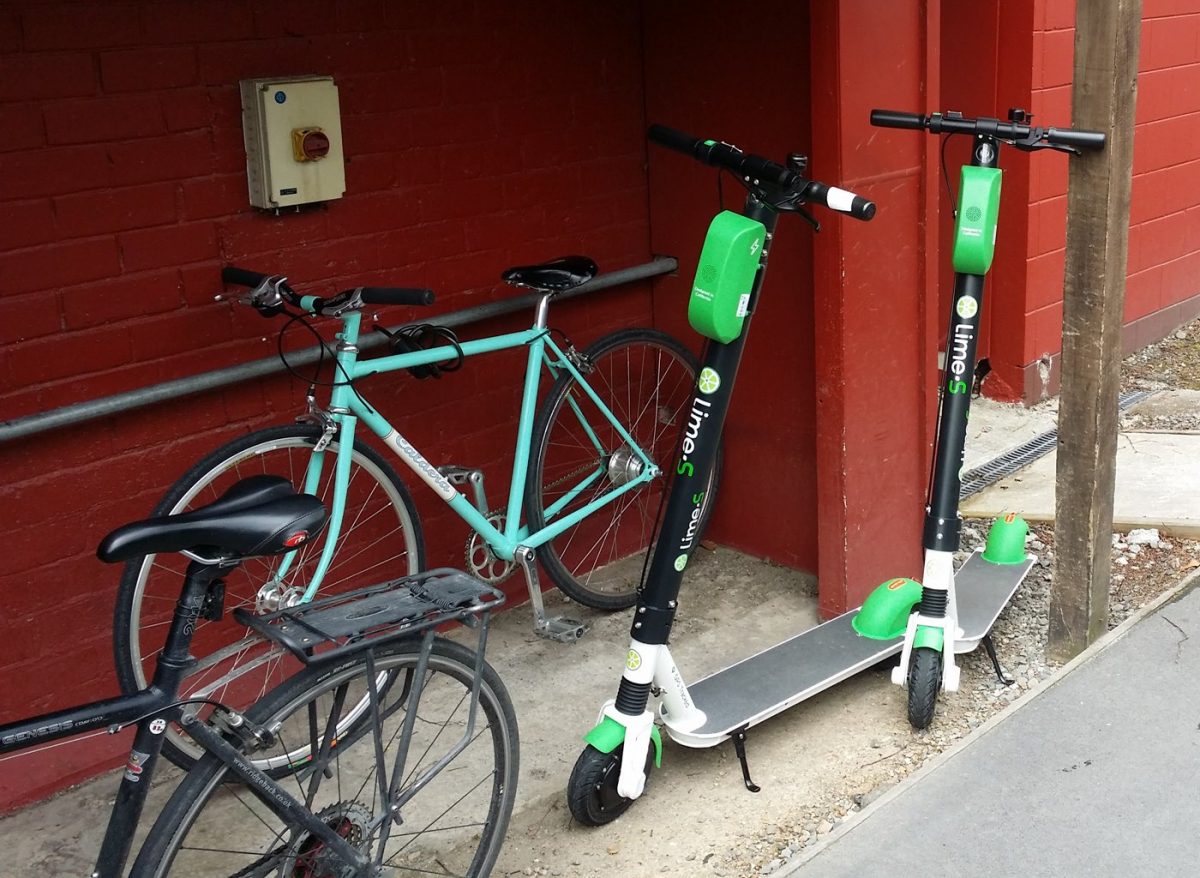
There is one potential issue I foresee that is not necessarily bike-specific and not really an insurmountable obstacle, but particularly problematic with bidirectional cycleways: the lights on the lime scooters are pointed upwards and are fixed. I personally feel strongly about bicycles with upward-facing lights as well: that should be a finable offence. Lights pointing upwards are blinding other road users, and there is a reason you don’t see cars driving around with high beams on in town. Other than that, I am not sure. I don’t see the point of e scooters that couldn’t be solved by having a proper cycling culture, but I guess they are not nearly as much a danger to me than most cars (I mean this objectively: one is a 1000kg plus moving mass, so no matter what it is inherently more dangerous than anything else I can encounter on a road).
We should reconsider how we design roads, i.e. the space between legal boundaries. Pedestrians need a safe and comfortable space. People need somewhere to drive. Mid-size space for bikes, scooters and whatnot also needs to be there but is often taken up by storing cars.
I’ve done a wee count up- commuting through Waterloo Road I get passed by 10~20 vehicles going my way, but I pass 80~100 parked vehicles on my side of the road.
Haven’t managed to do this count travelling along Riccarton Road though – have to pay more attention to the traffic :-\
The time of roll out could not have been better. Even the most critical of the accessible city programme must now see that the wide shared spaces (without vehicles) provided are going to be valuable for moving people now. Tweak a few rules perhaps and do some educating, it will soon sort out any issues. The CBD is fast feeling like a huge playground, you cannot buy that sort of atmosphere.
Wheelchairs, walkers and cyclists on shared pathways also coexist. The improvements to cycleways have benefited all users. For those who like to complain about mobility issues, there are plenty of people who are truly mobility impaired who are independent thanks to the superior sealed paths. Hopefully the improvement in sealed shared paths will continue throughout the city. Those who struggle with sharing such spaces need to investigate the multitude of mobility stability aids that are now available to improve their quality of life.
The question of lime scooters on pathways and cyclists on pathways have had me looking up speed limits for cyclists using shared pathways.
Under NZ laws there is no speed limits placed on cycles, just a wheel size of 355 mm. Meaning most days cycling on a path is not lawful. Then it also falls on local body rules made by the council of that area about cycling on pathways.
I have contacted the council as the speed allowed on pathways is of interest as I have to use a shared pathway to get to the city from home, they will ring back when they themselves find out what the bylaws are.
Just to note, a cyclist can be charged with endangerment if they decided to break the speed rules set for road users. [doing say 60 km’s in a 50 km area]
Am looking forward to finding out more on speeds for cyclists and shared paths, and will post here when I find out more.
There are different rules for footpaths vs shared paths; you can always bike on the latter. Paths in the same corridor as a road have the same speed limit applied to them (and Councils can put speed limit bylaws on paths in parks); however, as described in the article above, there are also existing rules about path use behaviour that include not travelling at a speed hazardous to other users. Context-specific yes, but usually quite clear when you are being unduly reckless relative to the people around you (esp. if you crash into someone).
Update to my post about speed.
There is not bylaw about the required speed of cyclists on shared pathways, it is down to common sense.
Common sense, of which cyclists and escooter users display very little of when using shared paths with pedestrians.. Time to start fining cyclists for riding at speed or recklessly on shared paths (or footpaths where they shouldn’t be anyway(